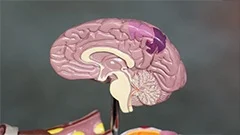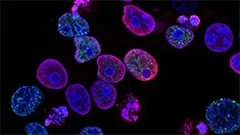Introduction
The immune system is a complex network of cells, tissues, and organs that protects the body from foreign invaders, such as viruses, bacteria, parasites, and cancer cells. In this course, we will focus on the immune response to infection, delving into the mechanisms by which the immune system recognizes and eliminates pathogens, and how these responses can impact human health and disease.
Overview of the Immune System
Innate Immune Response
The innate immune response is our body's first line of defense against pathogens. It consists of physical barriers (e.g., skin, mucous membranes), phagocytes (e.g., neutrophils, macrophages), and non-specific inflammatory responses (e.g., fever, pain).
Recognition of Pathogens by the Innate Immune System
Innate immune cells recognize pathogens through pattern recognition receptors (PRRs) that bind to conserved molecular patterns on pathogens, such as lipopolysaccharides in gram-negative bacteria and double-stranded RNA in viruses.
Innate Immune Responses to Infection
The innate immune response involves the activation of inflammatory cytokines, chemokines, and complement proteins, leading to the recruitment of phagocytes to the site of infection. These cells engulf and destroy pathogens through phagocytosis and the release of reactive oxygen species (ROS).
Adaptive Immune Response
The adaptive immune response is a more targeted response that develops over time in response to specific pathogens. It consists of T cells (cell-mediated immunity) and B cells (humoral immunity).
Recognition of Pathogens by the Adaptive Immune System
Adaptive immune cells recognize pathogens through antigen-specific receptors, such as T-cell receptors (TCRs) on T cells and B-cell receptors (BCRs) on B cells. These receptors bind to specific epitopes on the surface of pathogens or their secreted products.
Adaptive Immune Responses to Infection
Activated T cells can directly kill infected cells, secrete cytokines that activate other immune cells, and stimulate B cells to produce antigen-specific antibodies. These antibodies neutralize pathogens by preventing them from binding to host cells or inhibiting their replication.
Interaction Between the Innate and Adaptive Immune Responses
The innate and adaptive immune responses interact closely during an infection. For example, cytokines produced during the innate response can activate T cells, which then help B cells to produce antibodies more efficiently.
Regulation of the Immune Response
Regulation of the immune response is crucial for maintaining homeostasis and preventing autoimmunity. This involves negative feedback loops, tolerance mechanisms, and regulatory T cells (Tregs).
Immunopathology and Clinical Applications
Understanding the immune response to infection can help us develop effective strategies for preventing and treating infections. However, a dysregulated immune response can also contribute to disease pathogenesis. For example, excessive inflammation can lead to tissue damage during sepsis, while deficient immune responses can allow pathogens to proliferate in AIDS or cancer.
Conclusion
In this course, we have explored the intricacies of the immune response to infection, shedding light on the various mechanisms by which our body defends itself against pathogens. We have also discussed the importance of a balanced immune response for maintaining health and preventing disease.
MCQ: Test your knowledge!
Do you think you know everything about this course? Don't fall into the traps, train with MCQs! eBiologie has hundreds of questions to help you master this subject.
These courses might interest you
Create a free account to receive courses, MCQs, and advice to succeed in your studies!
eBiologie offers several eBooks containing MCQ series (5 booklets available free for each subscriber).




